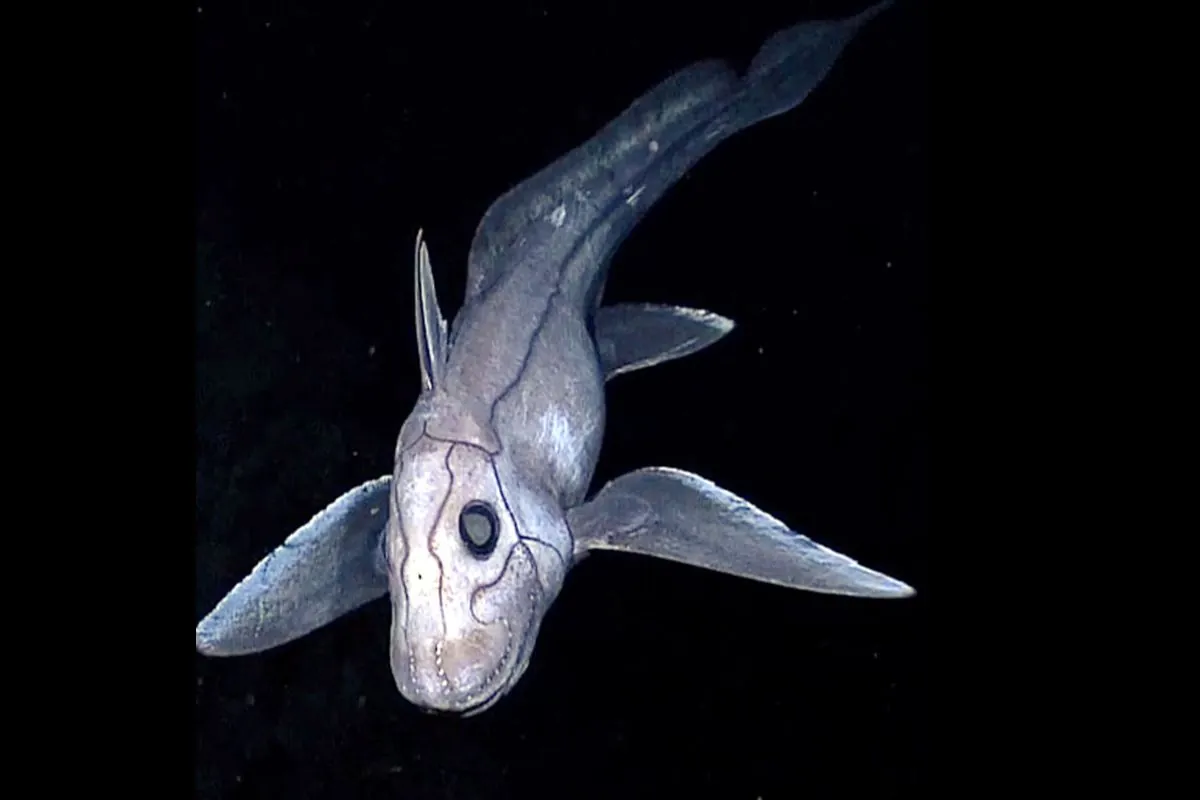In a significant marine discovery, researchers have identified a new species of ghost shark in the depths of the Pacific Ocean. The creature, characterized by its distinctive beak-like mouth, was found in waters surrounding Australia and New Zealand.
Brit Finucci, a research scientist from the National Institute of Water and Atmospheric Research (NIWA) in Wellington, led the team that made this remarkable find. The discovery occurred during an expedition to the Chatham Rise, an underwater plateau extending approximately 1,000 kilometers east of New Zealand's South Island.
Ghost sharks, scientifically known as chimaeras, are fascinating deep-sea dwellers that diverged from sharks and rays about 400 million years ago. Despite their name, these creatures are not true sharks but belong to a group of cartilaginous fish. They typically inhabit depths of up to 2,600 meters, making them challenging subjects for scientific study.
The newly discovered species, named "Harriotta avia" by Finucci in honor of her grandmother, possesses several intriguing characteristics. These ghost sharks have haunting black eyes and smooth, light brown skin devoid of scales. Instead, their skin is often covered in tooth-like denticles, providing a unique texture.
Ghost sharks, also known as spookfish or ratfish, have evolved remarkable adaptations for their deep-sea lifestyle. They possess electroreceptors on their snouts to detect prey in the dark ocean depths, compensating for their poor eyesight. Their diet primarily consists of crustaceans, which they crush using grinding tooth plates rather than sharp teeth.
The Chatham Rise, where this new species was found, is renowned for its rich marine biodiversity and serves as an important fishing ground for New Zealand. Formed by volcanic activity millions of years ago, this underwater plateau creates a unique ecosystem that supports a variety of deep-sea life.
Finucci emphasized the significance of this discovery, stating, "Ghost sharks like this one are largely confined to the ocean floor. Their habitat makes them hard to study and monitor, meaning we don't know a lot about their biology or threat status, but it makes discoveries like this even more exciting."
This finding highlights the importance of continued deep-sea research. Despite technological advancements, much of the ocean's depths remain unexplored, potentially harboring numerous undiscovered species. The identification of "Harriotta avia" as genetically and morphologically distinct from its relatives underscores the diversity that may exist even within seemingly well-known groups of marine life.
As scientists continue to unravel the mysteries of the deep, discoveries like this new ghost shark species provide valuable insights into the complexity and richness of marine ecosystems. They also emphasize the need for conservation efforts to protect these unique and often vulnerable deep-sea habitats.
"Their habitat makes them hard to study and monitor, meaning we don't know a lot about their biology or threat status, but it makes discoveries like this even more exciting."
This discovery not only expands our knowledge of marine biodiversity but also serves as a reminder of the wonders that still await us in the unexplored realms of our planet's oceans.
